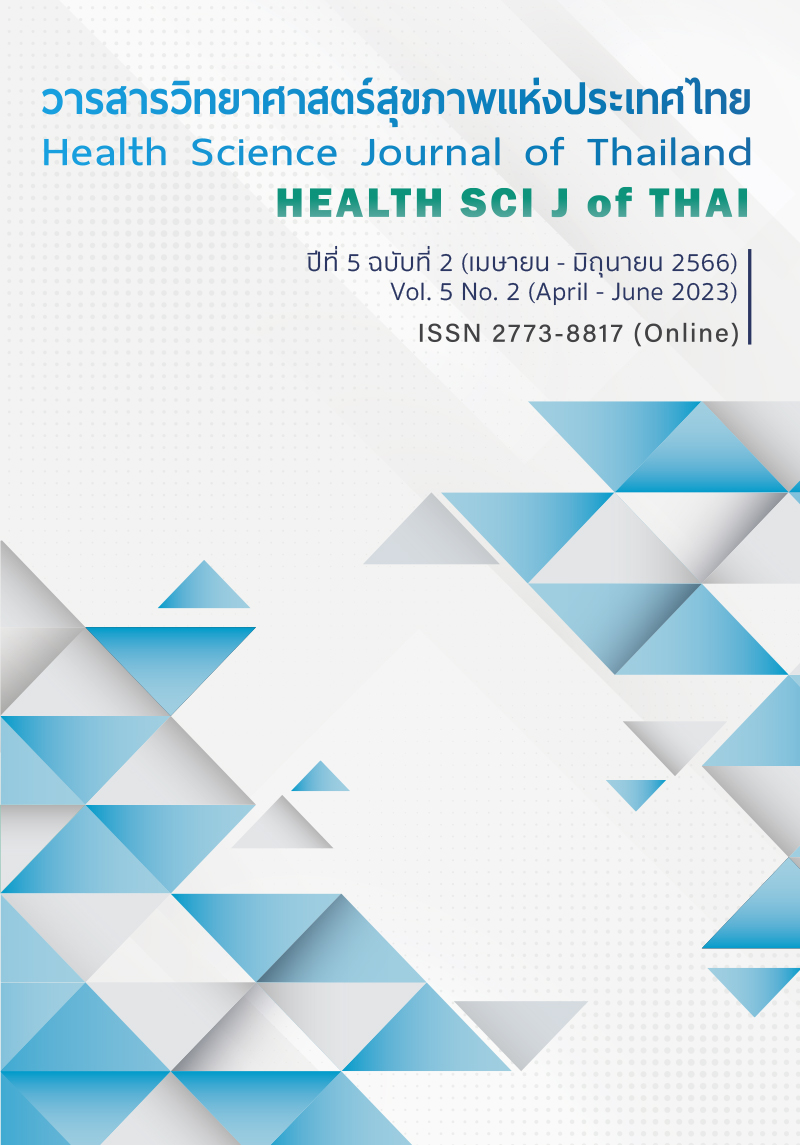Standard Indicators for Monitoring and Evaluation of COVID-19 Vaccine after Introducing in Thailand
Main Article Content
Abstract
This study aimed to develop a monitoring and evaluation (M&E) framework and relevant indicators to monitor and evaluate the implementation progress of the COVID-19 vaccine policy during the post-vaccination period in Thailand. A scoping review, a pre-meeting survey, and a stakeholder consultation meeting were conducted. The study finding proposed an M&E framework to support the COVID-19 vaccine policy during the implementation process consisting of three main pillars: 1) coverage indicators; 2) operational indicators; and 3) clinical and other indicators. Each pillar included 9 sub-topics for a total of 34 standard indicators. These indicators can be integrated and contextualized into the existing monitoring and evaluation framework of relevant organizations in different settings and levels of assessment. In addition, the study finding offers guidance for monitoring and evaluating other diseases in the future.
Article Details

This work is licensed under a Creative Commons Attribution-NonCommercial-NoDerivatives 4.0 International License.
References
Sritipsukho P, Khawcharoenporn T, Siribumrungwong B, Damronglerd P, Suwantarat N, Satdhabudha A, et al. Comparing real-life effectiveness of various COVID-19 vaccine regimens during the delta variant-dominant pandemic: a test-negative case-control study. Emerg Microbes Infect. 2022;11(1):585-92.
Ministry of Public Health. Situation - Corona Virus Disease (COVID-19) [Internet]. 2022. Available from: https://ddc.moph.go.th/covid19-dashboard/ (In Thai).
Mogeni OD, Cruz Espinoza LM, Im J, Panzner U, Toy T, Pak GD, et al. The Monitoring and Evaluation of a Multicountry Surveillance Study, the Severe Typhoid Fever in Africa Program. Clin Infect Dis. 2019;69(Suppl 6):S510-S8.
Ouyang H, Ma X, Wu X. The prevalence and determinants of COVID-19 vaccine hesitancy in the age of infodemic. Hum Vaccin Immunother. 2022;18(1):2013694-.
Suppamas Punchuey. COVID vaccine the hope of ending the outbreak. Krabi Medical Journal. 2022;4(1):63-81.
Steinglass RJGHS, Practice. Routine immunization: an essential but wobbly platform. 2013;1(3):295-301.
Arksey H, O'Malley L. Scoping studies: towards a methodological framework. International Journal of Social Research Methodology. 2005;8(1):19-32.
Levac D, Colquhoun H, O'Brien KK. Scoping studies: advancing the methodology. Implementation science : IS. 2010;5:69.
Khalil H, Peters M, Godfrey CM, McInerney P, Soares CB, Parker D. An Evidence-Based Approach to Scoping Reviews. Worldviews on evidence-based nursing. 2016;13(2):118-23.
Marzouk M, Omar M, Sirison K, Ananthakrishnan A, Durrance-Bagale A, Pheerapanyawaranun C, et al. Monitoring and Evaluation of National Vaccination Implementation: A Scoping Review of How Frameworks and Indicators Are Used in the Public Health Literature. Vaccines (Basel). 2022; 10(4).
Minutes of meeting: Understanding the challenges to develop monitoring and evaluation framework for COVID-19 vaccination policy in Thailand [Internet]. 2022. Available from: https://www.hitap.net/documents/183486 (In Thai).
Intaratat K. Communication and Development. Nonthaburi: Office of the University Press, Sukhothai Thammathirat Open University; 2011. (In Thai).
Pinno. K, Khahakitkoson A. Language and Communication. Bangkok: Oriental Languages Major, Faculty of Archeology, Silpakorn University; 2011 (In Thai).


